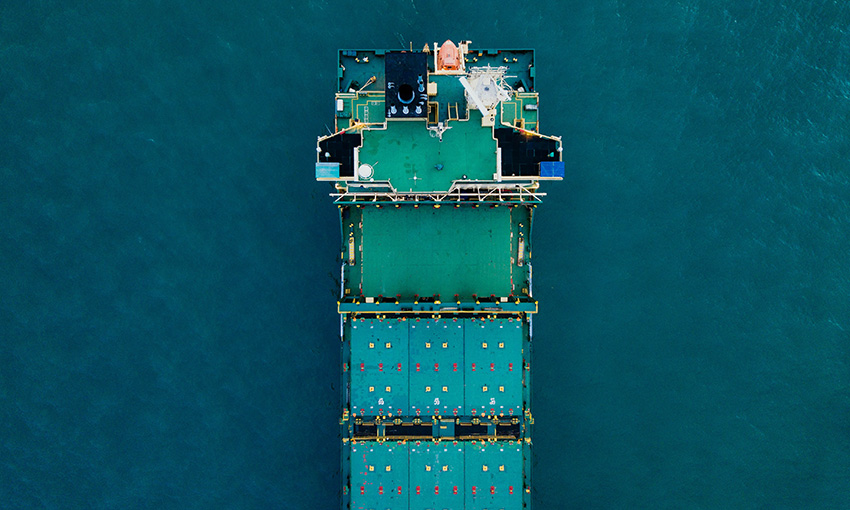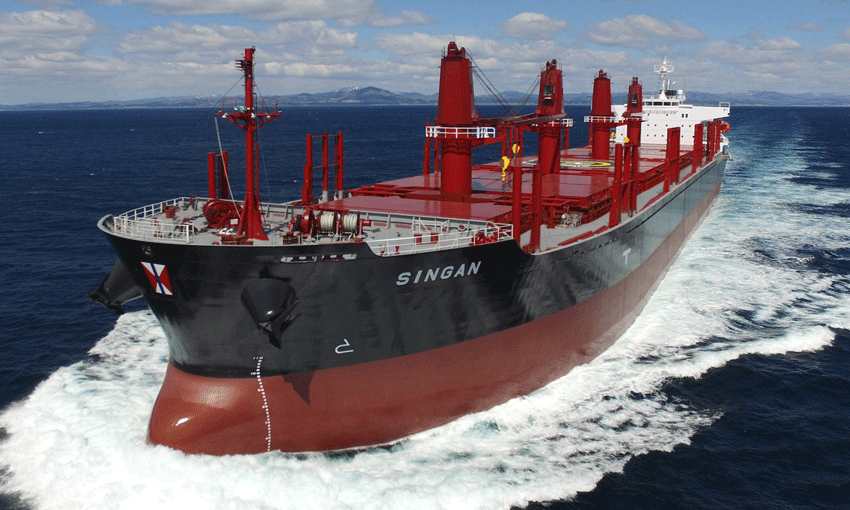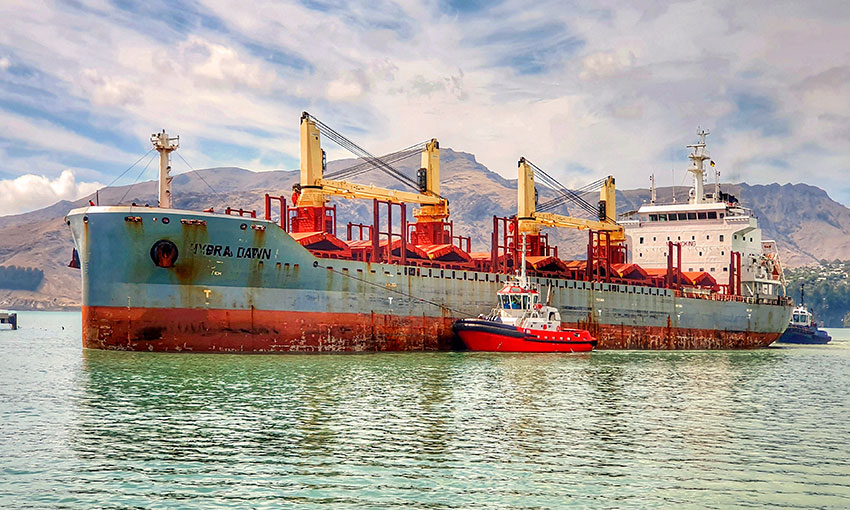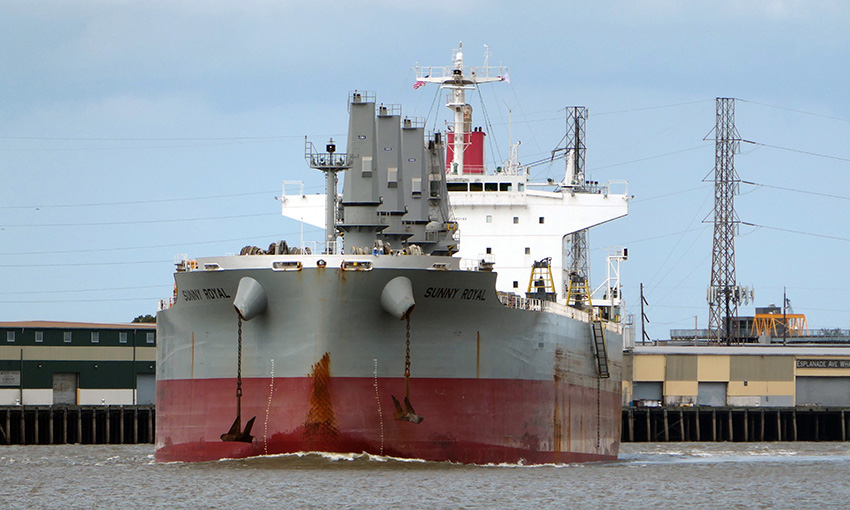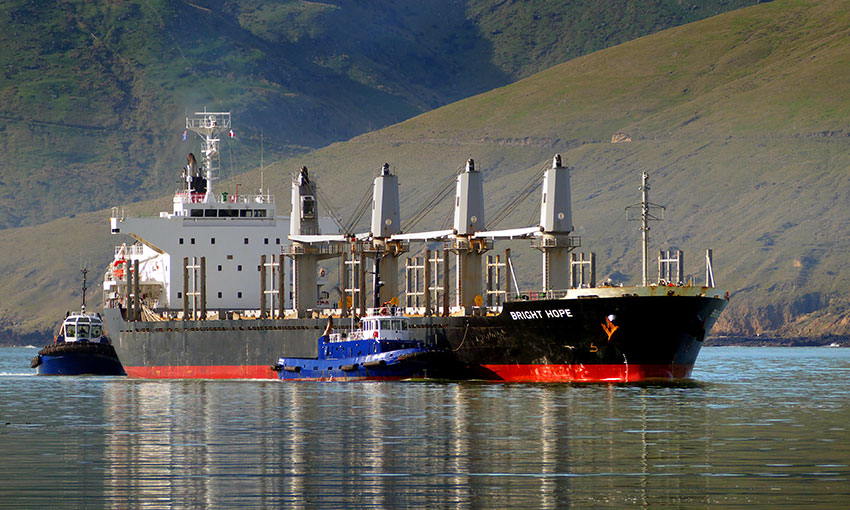THE Baltic Dry Index last week remained flat after a steep incline following a period of long decline.
The BDI on Friday (18 February) was 1964, a very slight decrease on the previous Friday (when the BDI was 1977).
Capesize
The Capesize market struggled to hold its value this week as rates ebbed away across all routes. Closing Friday some reprieve was found as the Capesize 5TC closed on a positive up note +1888 to settle at US$13,888.
The Pacific region, which experienced stronger swings compared with the other regions, saw the Transpacific C10 change +1546 week on week concluding at US$9,125.
In the Atlantic, rates were seen to dip midweek, yet pushed up strongly on Friday as several stronger fronthaul fixtures were reported although some of these for breaching ice prone regions. The Fronthaul C9 was seen closing up +5600 to US$37,350. The Brazil to China C3 market was relatively quiet as it also softened throughout the week. Yet it was also swept up in the positive end of week sentiment as it closed +0.685 to settle at US$21.605. On a time charter basis the Brazil to China C14 now prices at US$10,973.
Moving into next week on a positive note means the market can likely regain some lost ground in the first few days, but whether it has the legs to move on further remains to be seen.
Panamax
Brokers spoke of a two-tier market this week in both basins depending on vessels open dates with later tonnage commanding a small premium at present.
In East Coast South America there has been more visible activity today with an 83,000-dwt fixed basis delivery retro sailing Singapore on the 12 February for a trip via East Coast South America to South East Asia at US$23,000 and a 81,000-dwt placed on subjects for a trip from East Coast South America to Singapore-Japan Range at US$26,000, plus a ballast bonus of US$1,300,00 for early March Delivery.
A Kamsarmax open Continent was fixed via Ice Free ports in the Baltic to India at US$33,000. Nopac has also been active with Kamsarmax’s fixing from South Korea and China via Nopac for a round voyage between US$22,000 and US$24,000 levels depending on specs. A Kamsarmax was rumoured to have been fixed for a year basis delivery South East Asia at around US$27,000.
Ultramax/Supramax
A mixed week overall as the Asian arena started proceeding on a firm note only to ease off as the weekend came.
From the Atlantic the US Gulf demand was seen although some said again this was easing.
Elsewhere, sentiment remained strong from the Mediterranean. Period activity was on the increase, A 63,000-dwt open China fixing five to seven months trading at US$32,500.
From South America demand was seen a 52,000-dwt fixing a trip delivery Recalada redelivery Mediterranean at US$32,000. Whilst from the Mediterranean a 61,000-dwt fixed a trip delivery Damietta redelivery West Africa at US$29,000.
Enquiry from south Asia weakened as the week progressed, a 55,000-dwt fixing delivery Singapore via Indonesia redelivery China at US$23,500. Further north a slightly more positive feel, a 55,000 open South Korea fixing a round voyage via Australia at US$29,000 redelivery Singapore-Japan. Limited activity was reported from the Indian Ocean, but a 53,000 open Jebel Ali fixed a trip to Bangladesh at US$35,000.
Handysize
We have seen more positive gains on the BHSI this week, with most markets seeing daily improvements. In Asia a lack of prompt tonnage is still driving the increases with a 38,000-dwt fixed from North China to the Mediterranean at US$32,000.
A 1990’s built 45,000-dwt fixed from South East Asia to West Africa at US$19,000 with an intended cargo of slag. In the Atlantic a 38,000-dwt fixed from Çanakkale via the Black Sea to the US Gulf at US$21,000. A large handy fixed from the Sea of Marmara via the Black Sea to the Continent at US$20,000.
Period fixtures have been active in both basins with a 37,000-dwt open in South China was fixed for three to seven months at US$28,000. A 35,000-dwt open in China with prompt dates was fixed at US$28,000 for a short period and a 45,000-dwt open in early March in Lake Charles fixing for two years at 110% of the BHSI.
Clean
In the Middle East Gulf this week, TC1 demand has been steady for the LR2s, which have remained around WS75. The LR1s have been holding onto WS95 mark for TC5 55k Middle East Gulf/Japan with more enquiry required going forward if that is to stay. The active MRs this week saw TC17 retested back up to WS203.75 (+WS18.33), taking the round trip TCE just over the US$10,000/day. West of Suez, the LR2s, TC15 80k Mediterranean/Japan have seen an incremental improvement this week up to the US$1.85m mark. The LR1s, TC16 60k Amsterdam/Offshore Lomé lost steam through the week after peaking at WS120 are now back down to WS104.29.
On the UK-Continent, MR activity has dwindled as the week has gone on. TC2 37k UK-Continent/US Atlantic Coast peaked at WS175 mid-week but has now dropped back down to WS167.22, a round trip TCE of US$8496/day. TC19 37k Amsterdam to Lagos has also risen 7.14 points to WS155.71 (a round trip TCE of US$8659/day).
The Americas has been the highlight of the week with both MR routes seeing significant freight rate hikes off the back of bullish sentiment. TC14 38k US Gulf/UK-Continent is now WS 120.71 (+WS23.21) and TC18 38k from US Gulf/Brazil WS 174.29 (+25.36). The MR Atlantic basket TCE rose from US$10,228/day to US$14,380/day.
The Baltic Handymax market held flat all this week TC9 30k Baltic/UK-Continent is still WS210 for the moment. In the Mediterranean, Handymax rates have been constantly progressive with cargoes being regularly renewed as well as the Black Sea playing a role in driving freight upwards. TC6 30kt Skikda/Lavera is now up at WS241.25 (+WS46.25) looking as though the market could go either way next week.
VLCC
There is a continued weakness in the Atlantic and Middle East markets. Rates for 280,000mt Middle East Gulf/USG (via Cape of Good Hope) remain at the WS16-16.25 level, while on the 270,000mt Middle East Gulf/China route rates slipped almost a point to WS32 (which shows a round trip TCE of minus US$13,100 per day).
In the Atlantic region the 260,000mt West Africa/China trip stumbled 1.5 points down to WS32 (a round-trip TCE of minus US$12,400 per day), with Unipec reported taking Frontline at this level for a cargo loading 11 March.
The 270,000mt US Gulf/China trip was reported fixed a handful of times this week in the US$4.4m-US$4.45m range and the market is assessed US$206,000 higher than a week ago at US$4.425m (a round-trip TCE of minus US$8200 per day).
Suezmax
Rates were flat across the board on the Baltic routes this week with very little activity reported: 130,000mt Nigeria/UKC at WS61.5-62 level (a round-trip TCE of minus US$1,200 per day), 135,000mt Black Sea/Augusta route at WS70 (a round-trip TCE of minus US$3,700 per day) and 140,000mt Basra/West Mediterranean at between WS29.5/30.
Aframax
The 80,000mt Ceyhan/Mediterranean market modestly rose a single point to WS98.5 (a round-trip TCE of US$3000 per day). In Northern Europe the rate for 80,000mt Hound Point/UKC is a point lower than last week at WS96.25 (a round-trip TCE of minus US$4000 per day) while in the 100,000mt Baltic/UKC market the rate remained flat at WS83 (a TCE of US$4400 per day).
On the other side of the Atlantic, the market continued its ascent with the rate for 70,000mt EC Mexico/US Gulf leading the way at WS162.5-165 region (a round-trip TCE of US$24,000 per day), up 12 points week-on-week and for the 70,000mt Caribbean/US Gulf route, the rate was pulled along by the EC Mexico market and firmed 13 points to WS152.5-155 level (a round-trip TCE of US$17,000 per day).
For the trans-Atlantic route the rate for 70,000mt US Gulf/UK Continent having started the week fixing in the low WS120s rose through WS125 then WS132 and has seemingly paused at last done levels of WS135 (US$13,100 per day round-tip TCE, which becomes a considerably improved figure basis one-way economics).

